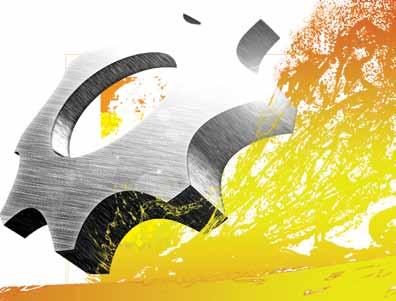Drilling Fluids Automix By
Vidar Hestad, Cameron, A Schlumberger Company; Arild Gulbrandsen, M-I SWACO, A Schlumberger Company
A
bstract
Two Schlumberger companies, Cameron and M-I SWACO, joined efforts to provide market with a drilling fluid optimization system to be used during drilling operations. Cameron delivers a complete remote-controlled and automatic drilling fluids mixing system, while M-I SWACO,s technology facilitates continuous real-time measurement, analysis and optimization of mud properties. Today mud samples are measured every 6 hours or more frequently, depending on the conditions in the well. The properties are then adjusted for the most part manually, based on a mud engineer,s practice. The Cameron Automix system comprises mechanized equipment and a robot for addition of chemicals into the drilling fluid, and works in concert with the M-I SWACO RheoProfiler instrument, which measures and analyzes drilling fluid properties in real time. Schlumberger (SLB) algorithms, designed to care for the known wellbore situations, automatically create optimal recipes for the chemicals to be mixed into the drilling fluid. The synergies between M-I SWACO,s core competence in fluids and RheoProfiler technology and Cameron,s competence in software and mixing equipment, result in a unique method / system of continuous stabilization and control of the wellbore through drilling fluid optimization. With the focus on a fully autonomous ‘closed-loop’ drilling rig, the spotlight is strongly directed on the drill floor activities and their automation. The main goal of SLB, in terms of automation and closedloop activities, is to improve the primary well barrier, keep well conditions under control, and rig safe. A combination of each company›s strengths, Automix and RheoProfiler can play an essential part in moving the drilling industry towards the same philosophy of fully automated and intelligent systems. The entire drilling operation needs to be viewed as one system, with
50 Petroleum Today
- August 2018
one organization working towards a common goal, reducing exploration cost without compromising safety. However, there will always be a need for the mud engineer on board. Less visible in the general hype around automation and more efficient drilling operations, is the importance of optimized properties of the mud in the drilling process. Safety during drilling, better well bore, economy or producing reservoir are just a few of the benefits of the SLB solution.
Introduction
A successful well has maximum productivity with minimum development cost, and no harm to personnel, environment and material. The drilling fluid is an expensive asset with immediate exposure to valuable well production zone, and it is our main barrier to protect wellbore and prevent influx from formation. Continuous standardized monitoring and maintenance of this barrier is critical. The aim of measuring and mixing drilling fluid is to get full control of what is going into the well and what is coming out of the well. Based on the difference, other measures from the well, geological data and maps well parameter can be identified and well model updated. From the updated well model theoretical best suited fluid is defined and used to calculate properties correction needed at current position in the well. The correction needed is then added as a recipe to the mixing system which automatically correcting the drilling fluid properties to desired values. Current measuring procedure and quality assurance is very often limited to four time-consuming manual tests per day, with executing engineer completing a report template which was initially presented decades ago. While we see in contrast to manual sampling, the inline measurements we aim performing are done continuously by the same procedure each time and hence give more frequent and uniform update



